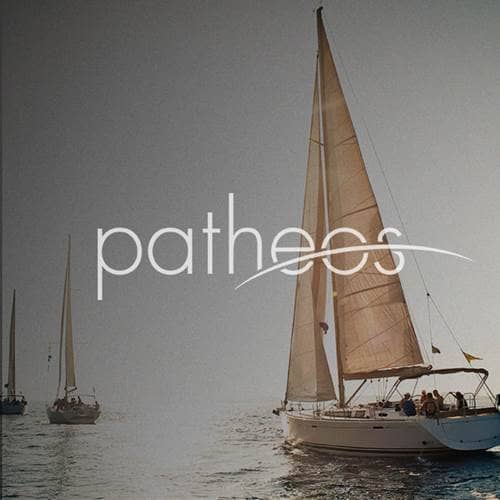- Trending:
- Pope Leo Xiv
- |
- Israel
- |
- Trump
- |
- Social Justice
- |
- Peace
- |
- Love
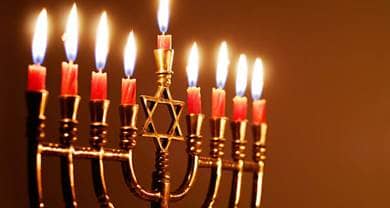
RELIGION LIBRARY
Judaism
Schisms and Sects
In both early Judaism and Christianity, we see attempts by the religious authorities to construct theological boundaries around a common enemy, gnosticism. This Hellenistic school of thought was based on the Greek word gnosis or esoteric knowledge of the cosmos that was only available to a select group of spiritual seekers. The gnostics sought to attribute the origins of evil in the material world to the wicked creator god Yaldabaoth that emanated from the mother goddess Sophia when she went against the wishes of the transcendent "Spirit."
There was clearly a tension between the dualistic, polytheistic beliefs of the gnostics and the early rabbinic and Christian mystical seekers. In the Christian version of this myth, The Apocryphon of John, Christ is sent down from the transcendent realm of heaven to remind people of their heavenly origin, yet only his followers who possess this gnosis and separate themselves from the evil material world can be saved from darkness. They can only return to the divine light of the transcendent God by following Christ back up through the different heavenly regions to the infinite realm. In the rabbinic community, Jewish mystics drew upon elements of the gnostic myth to describe divine characteristics, the ongoing revelation of God to humanity, and the path on which humans may ascend to God, while attempting to remain within monotheistic parameters.
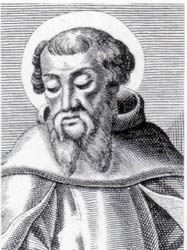 Both Jewish and Christian religious authorities branded the gnostics as heretics, yet their comprehensive critiques of gnostic teachings belie the pervasiveness of gnostic ideas within the leadership of their own communities. Just as the 2nd-century Church Father Irenaeus must have been familiar with Christian gnostic teachings in order to refute them in Against Heresies, the rabbis indicated their familiarity with Jewish gnosticism in their polemics against it. In the Talmudic tractate Hagigah, the rabbis laid out the parameters for acceptable cosmological speculation, and in the process shed light on the very mystical schools they set out to debunk.
Both Jewish and Christian religious authorities branded the gnostics as heretics, yet their comprehensive critiques of gnostic teachings belie the pervasiveness of gnostic ideas within the leadership of their own communities. Just as the 2nd-century Church Father Irenaeus must have been familiar with Christian gnostic teachings in order to refute them in Against Heresies, the rabbis indicated their familiarity with Jewish gnosticism in their polemics against it. In the Talmudic tractate Hagigah, the rabbis laid out the parameters for acceptable cosmological speculation, and in the process shed light on the very mystical schools they set out to debunk.
In both of these sources, the rabbis set out to circumscribe the mystical study of Maaseh Bereshit, "The Work of Creation" in the first chapter of Genesis, that involved speculation of the universe. They restricted not only the subject of study but limited who may study it by arguing that one must not study with more than two people the heavens above, the demonic world below, the origins of the cosmos before the world was created, and the messianic destiny of the universe after the period of this-worldly existence is over.  Yet they went even further when addressing the mystical study of the Maaseh Merkavah, "The Work of the Chariot," based on the vision of God's chariot or throne in Ezekiel chapter 1. Because it involved delving into the very essence of God, the rabbis argued that one can only study it with one other person, and that person must be a sage who is old and wise enough to understand such mysteries.
Yet they went even further when addressing the mystical study of the Maaseh Merkavah, "The Work of the Chariot," based on the vision of God's chariot or throne in Ezekiel chapter 1. Because it involved delving into the very essence of God, the rabbis argued that one can only study it with one other person, and that person must be a sage who is old and wise enough to understand such mysteries.
Yet these polemical texts actually reveal the emergence of divergent mystical schools of thought dating back to the Second Temple period. Certain pharisaic circles taught Maaseh Bereshit and Maaseh Merkavah in which they referred to the living creatures in Ezekiel's vision as a hierarchy of angels in the Celestial Court of God. The next stage of Jewish mystical development occurred during the period of the Mishnah with the hekhalot or throne mysticism based on Ezekiel's vision of the divine throne and the larger realm of the "throne world." This corresponds directly with the gnostic pleroma or "fullness" of divine light, a sphere of divinity consisting of semi-divine powers or archons in different aeons or heavenly realms.
This literature, referred to as the "Hekhalot Books," displayed the different heavenly halls or divine palaces that the mystic, like the gnostic visionary, passed through until he reached the seventh heaven, and encountered the divine throne. The hekhalot literature was attributed to a late 1st-century circle of rabbis who were disciples of Rabban Yochanan ben Zakkai: Eliezer ben Hyrkanus, Akiba ben Joseph, and Ishmael the "High Priest." What makes this school of thought so countercultural is that these texts did not consist of traditional midrashim or interpretations of biblical passages, but a completely unique set of religious experiences not found in the Hebrew scriptures. Ultimately, this subterranean sect of rabbinic Jews could not share its gnosis for fear of opposing the rabbinic establishment and widening the schism within Judaism. Jewish gnosticism would remain underground until the end of the 13th century when the study of Kabbalah, the secret tradition of mystical teachings, would become popularized, and the Sefer Ha-Zohar, or "Book of Enlightenment," would become part of the canon of Jewish literature.
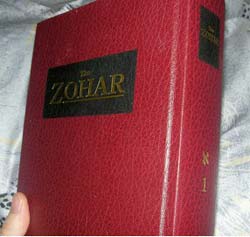 In 10th-century Muslim-ruled Babylonia, the Karaite sect emerged in opposition to the rabbinic establishment by rejecting the Talmud as a human creation set up to deceive and alienate the individual Jew from the Torah while strengthening rabbinic power. Influenced by Greek and Arabic philosophy, the Karaites argued that each individual must rely on one's own intelligence to understand the Hebrew Bible and not depend upon any outside human authority. However, Rabbi Saadiah Gaon, one of the rabbinic sages who directed the Babylonian Talmudic academy in Sura and produced his own philosophical work, countered that while the human intellect is the most essential foundation of faith, the Written and Oral Torah are also necessary sources for understanding divine revelation and must be reconciled with human knowledge.
In 10th-century Muslim-ruled Babylonia, the Karaite sect emerged in opposition to the rabbinic establishment by rejecting the Talmud as a human creation set up to deceive and alienate the individual Jew from the Torah while strengthening rabbinic power. Influenced by Greek and Arabic philosophy, the Karaites argued that each individual must rely on one's own intelligence to understand the Hebrew Bible and not depend upon any outside human authority. However, Rabbi Saadiah Gaon, one of the rabbinic sages who directed the Babylonian Talmudic academy in Sura and produced his own philosophical work, countered that while the human intellect is the most essential foundation of faith, the Written and Oral Torah are also necessary sources for understanding divine revelation and must be reconciled with human knowledge.
| Karaites | Rabbinic tradition |
| reject the Talmud as human creation only Hebrew Bible is necessary |
accept the Talmud as authoritative Written and Oral Torah are needed |
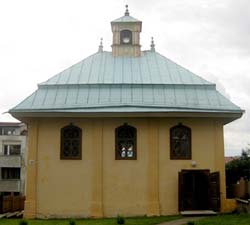
In response, the Karaites only increased their polemics against the "Rabbanites" by criticizing their promotion of worship outside of Jerusalem, arguing that all Jews must come to Jerusalem to publically mourn the destruction of the Temple and exchange any material prosperity they have gained in exile for a life of asceticism there. Ultimately, while the rabbis were able to suppress the Jewish gnostics until the 13th-century emergence of Kabbalah, the schism between the Karaites and Rabbanites was irreparable and produced permanent Karaite communities, some of which still exist today.
Study Questions:
1. Who were the gnostics? Why were they at tension with the early rabbinic mystical seekers?
2. Describe the development of Jewish mystical thought throughout history.
3. What is the Hagigah? What does it examine?








